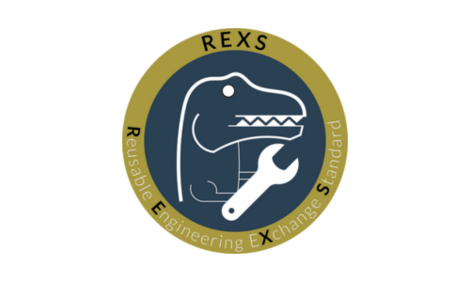Modern development processes increasingly use automated workflows to connect multiple programs and databases. The Reusable Engineering EXchange Standard (REXS), the standardized interface for the simple exchange of gearbox data, plays a key role in this context. With the new release of version 1.6, REXS can now be used to transfer data for hydrodynamic plain bearings. The REXS database also includes new tools to make exchanging data even more efficient.
Seamless integration into automated development processes
Integrating different programs into automated development processes is a complex challenge. In particular, ensuring seamless interaction between these programs requires careful handling of data formats and structures. With new tools (REXS Converter, REXS Diff Tool, and REXS Validation Tool) as well as new components and relations, REXS 1.6 offers a solution to these problems by enabling a standardized approach for exchanging data between different programs and databases.
REXS 1.6: New tools
Three innovative new tools have been developed to simplify the integration of REXS into automated processes. The new REXS Converter eliminates version limitations and improves the flow of data between different programs. The REXS Diff Tool makes it easy to compare different models, making development processes much more consistent and efficient. The Validation Tool ensures compliance with standards. Together, these tools overcome the key challenges to the integration of automated workflows.
1. REXS Converter
The REXS Converter makes it easier to exchange data between different REXS versions by converting files in different formats such as XML, JSON, and ZIP and making them usable for higher REXS versions. This eliminates version restrictions and improves the flow of data.
2. REXS Diff Tool
The REXS Diff Tool offers a solution for the problem of different views and levels of detail for components in various programs. It also addresses the issue that programs may export different versions of the REXS interface, even when there are no significant differences in the models. The tool uses a matching algorithm to identify differences between two REXS files. It can either be used in the REXS database or as a console version. Like REXS, the REXS Diff Tool is open source.
3. REXS Validation Tool
In addition to validation according to existing XML schemas, the Validation Tool is used to check compliance with the REXS standard. This ensures that attributes are correctly assigned and that components include appropriate relations.
REXS 1.6: New components and relations
REXS 1.6 includes additional components to continue to improve the standard and meet the requirements of modern development processes. These components increase the spectrum of possible applications and enable the realistic representation of complex systems.
Hydrodynamic plain bearings
The new hydrodynamic plain bearing components make it possible to model hydrodynamic fixed-segment plain bearings and any associated profile modifications in detail. There are a total of 115 attributes distributed across seven different components. Potential use cases for hydrodynamic plain bearings include transferring the stiffness and the operating point from a plain bearing simulation, configuration in various systems, and more.
Bearing rings, sleeves, and surface contacts
The components for bearing rings, sleeves, and surface contacts make it possible to describe the contact between bearing rings and connected components. They are especially useful when different materials are used in the bearings or when the bearing rings are ground directly onto the components.
Wheel bodies
Wheel body components are defined as either a polyline or a circular arc segment in the U-V plane. Alternatively, references can be made to CAD geometry and FE mesh files. This makes it possible to use available data, allowing for straightforward integration into existing development processes.
REXS 1.6: new tools and components are the key to increased efficiency
The tools and components in REXS 1.6 make integration into automated workflows much easier and improve the efficiency of development processes.
The new tools for integrating the REXS interface into automated processes greatly simplify development work. The REXS Converter eliminates version restrictions and improves the flow of data between different tools. The REXS Diff Tool makes it easy to compare different models, contributing to the consistency and efficiency of development processes. The REXS Validation Tool can verify and validate conformity. Together, these tools represent significant progress in the integration of automated workflows and help to improve the efficiency and accuracy of development processes.
The new REXS components improve the functionality and flexibility of the standard, enabling detailed modeling and analysis of complex systems in modern development processes. The integration of these components makes the REXS standard even more versatile and better suited to the requirements of the industry.
More information at: www.rexs.info

